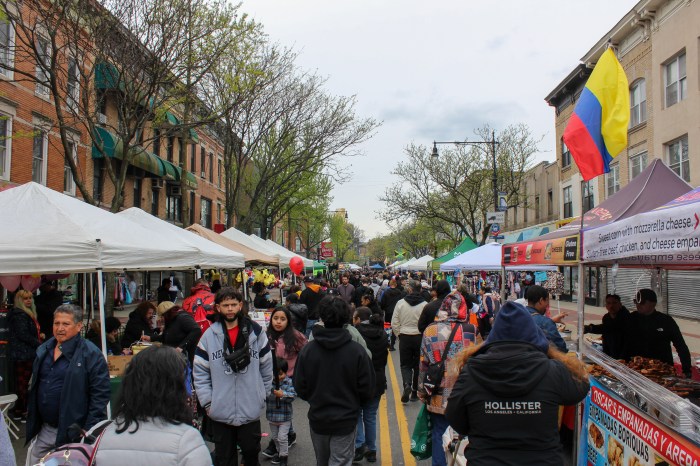By The Times/Ledger
Last month the state's chief judge, Judith Kaye, announced a courageous plan that would radically reduce the number of nonviolent drug offenders sent to prison each year in New York state. If it can clear some significant hurdles, Judge Kaye's initiative will send as many as 10,000 defendants to treatment rather than prison over the next three years.
At the dawn of the 21st century, this plan could go a long way toward reversing the effects of the Rockefeller Drug Laws. These laws, enacted in 1973, mandated harsh sentences for people convicted of drug offenses, including nonviolent and first-time offenders. Under these laws, a defendant convicted of selling more than two ounces or possession of more than four ounces of a narcotic faces a sentence of 15 years to life.
Today there are more than 70,000 inmates in the state's prison system. Over the last two decades, while the schools in New York City were left to rot, the state spent more than $4 billion on new prisons. If this approach worked, it might be hard to argue against it. Clearly it has not.
The Rockefeller Drug laws were written at a time when the public was panicked by the rapid rise of drug-related crime and the relative ineffectiveness of drug treatment. That is no longer the case. Today approaches to drug rehabilitaion are far more sophisticated. Studies by the RAND Drug Policy Research Center and the National Institute on Drug Addiction have found that mandatory treatment is far more effective in reducing criminal recidivism than mandatory prison sentences. Simply put, you and your family will be safer and there will less drug dealing in your neighborhood if the emphasis is shifted to mandatory treatment.
Under Judge Kaye's plan, first-time nonviolent defendants would have the option of going to a specialized drug court. In this court, judges would become experts in the problem of drug addiction. Defendants would be required to plead guilty and agree to participate in a treatment program. The judge will closely monitor the defendant's progress. Those who fail face the threat of prison. Those who succeed over a period of time would have the arrest and conviction removed from their record.
The drug courts could have a dramatic impact on the city's minority communities. African Americans and Latinos comprise more than 94 percent of the drug offenders wasting their lives in our state prisons. Of these, 48 percent are African American and 46 percent are Latino.
Thousands of young men removed from the city's black and Hispanic communities have fed the prison industry in upstate New York. It costs $32,000 a year to keep a man in prison. By comparison, outpatient drug treatment costs about $3,000 a year and residential treatment costs about $20,000.
There are other costs more difficult to measure. When we send a man to prison, we rip him from his family and his community. Children with parents or siblings in the prison system are far more likely to experience severe behavioral problems. Without the father's financial support, families are far more likely to need public assistance. Some children grow up with the unspoken feeling that crime and prison are inevitable.
The state Legislature must give Judge Kaye its support in correcting the disastrous effects of the Rockefeller Drug Laws. There are too many people in our prisons. Too many blacks. Too many Hispanics. Too many families torn apart. We are spending too much money on prisons with too little on education and programs that will reduce the prison population. Criminal justice policy must be dictated by compassion and common sense. Those who know the problem well say there is a better way. We would be foolish not to listen to them.

































